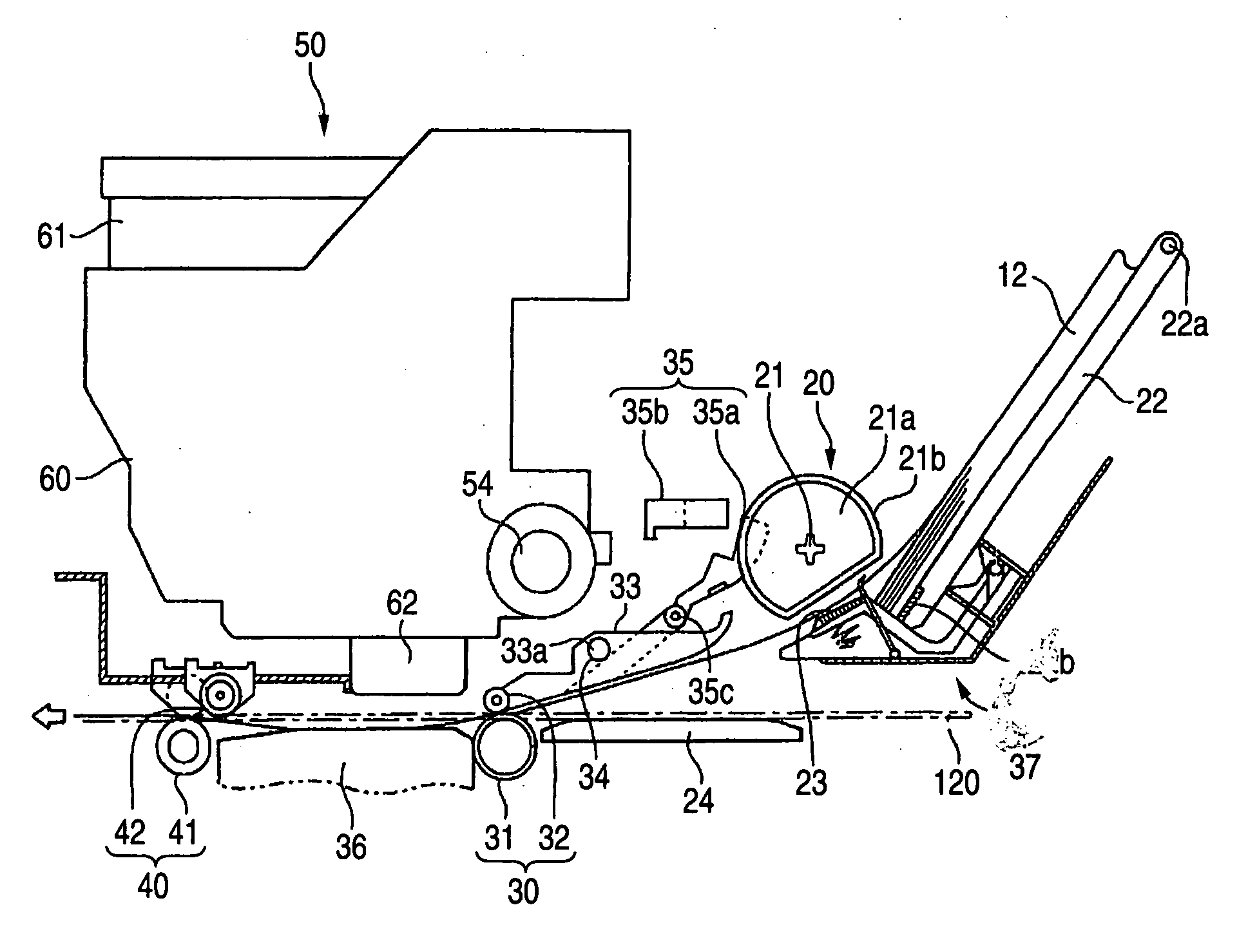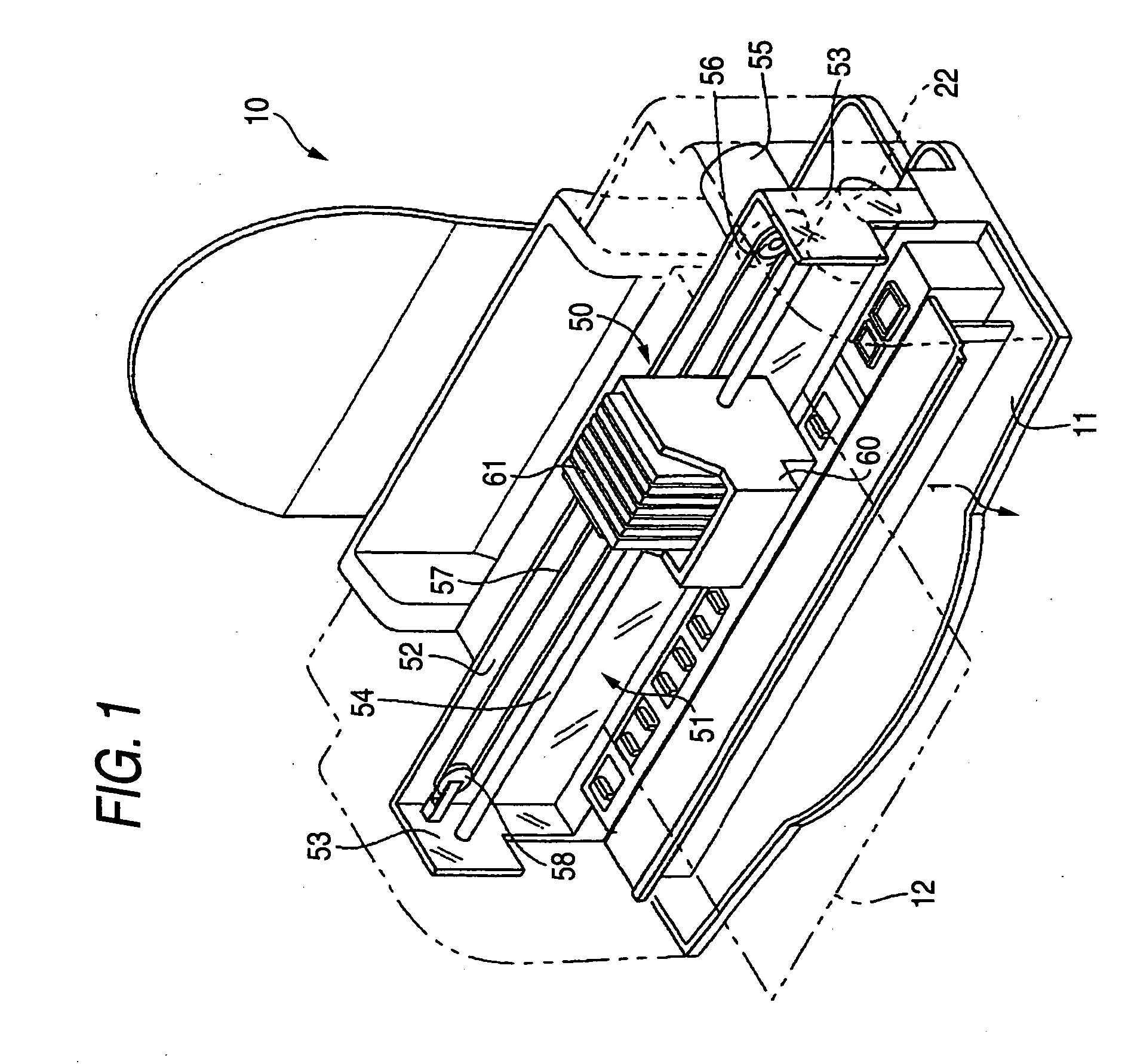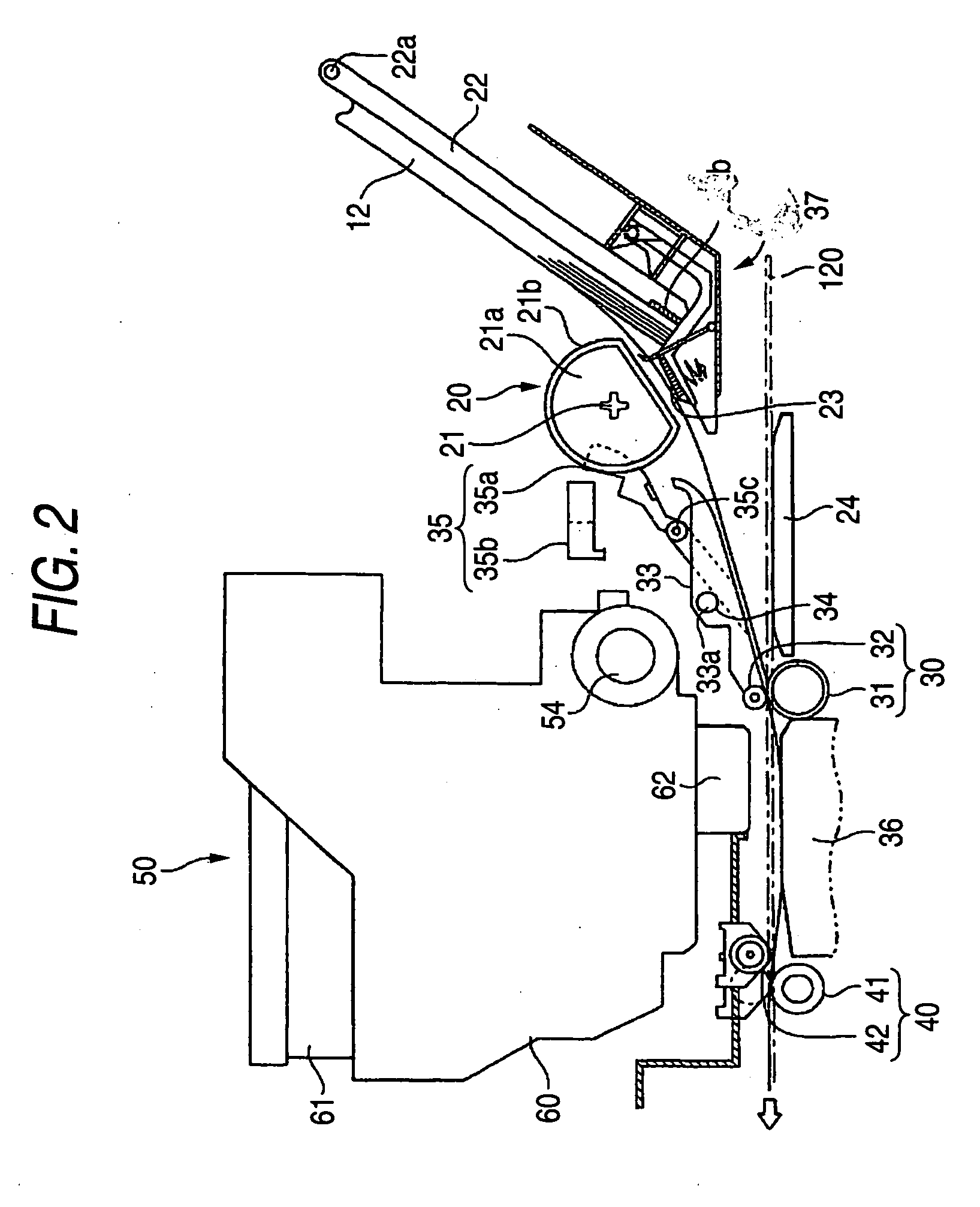Printer and printing control method
- Summary
- Abstract
- Description
- Claims
- Application Information
AI Technical Summary
Benefits of technology
Problems solved by technology
Method used
Image
Examples
first embodiment
[0197] Besides, the control programs for controlling the printer 10, data necessary for processes, and the like are stored in the ROM 72. In the invention, a drive control program and the like responsive to the kind of the printing object 12 are stored in the ROM 72. This drive control program enables the control and driving of the PF motor 25 which are based on detection of the PW sensor 64 and correspond to a to-be-described flowchart shown in FIG. 9. Besides, the I / F circuit 75 incorporates a parallel interface circuit and can receive a print signal supplied from a computer 90 via a connector 91.
[0198] The RAM 73 is a memory that temporarily stores, for example, a program being executed or data being calculated by the CPU 71. Besides, the nonvolatile memory 80 is a memory for storing various data that need be held even after the inkjet printer 10 is powered off.
[0199] Besides, the DC unit 76 is a control circuit for controlling the speed of the PF motor 25 and CR motor 55 that a...
second embodiment
[0241] The second embodiment will now be described with reference to FIG. 10.
[0242] In the second embodiment, a drive control program responsive to the kind of the printing object 12 is stored in the ROM 72. This drive control program enables the control and driving of the PF motor 25 which are based on detection of the PW sensor 64 and correspond to a to-be-described flowchart shown in FIG. 10.
[0243] Step T10: When a user sets the photo stand paper 120 and sends a print command, a paper feed operation of feeding the photo stand paper 120 is started. In this case, the user inserts the photo stand paper 120, for example, from the opening 37. Then, by a transport operation of the PF motor 25, the photo stand paper 120 reaches the opening 37, and subsequently the front end thereof on the discharge side is nipped by the PF roller pair 30. And, the PF drive roller 31 is driven by the PF motor 25, thereby transporting the photo stand paper 120 toward the paper discharge side.
[0244] Besi...
third embodiment
[0269] The third embodiment will now be described.
[0270] In a third embodiment, a drive control program, a correction value A, and the like responsive to the kind of the printing object 12 are stored in the ROM 72. This drive control program enables the control and driving of the PF motor 25 which are based on detection of the PW sensor 64 and correspond to to-be-described flowcharts shown in FIGS. 11 and 12.
[0271] There will first be described the method of correcting a general printing object other than the photo stand paper 120. To describe a correction value, the control section 70 corrects the amount of the printing object 12 transported, using three correction values A, B, and C serving as the correction information. These correction values are for correcting the error (hereinafter called the “transport error”) between a theoretical amount of the printing object 12 transported (paper transport amount) and an actual amount thereof transported.
[0272] The correction value A cor...
PUM
 Login to View More
Login to View More Abstract
Description
Claims
Application Information
 Login to View More
Login to View More - R&D
- Intellectual Property
- Life Sciences
- Materials
- Tech Scout
- Unparalleled Data Quality
- Higher Quality Content
- 60% Fewer Hallucinations
Browse by: Latest US Patents, China's latest patents, Technical Efficacy Thesaurus, Application Domain, Technology Topic, Popular Technical Reports.
© 2025 PatSnap. All rights reserved.Legal|Privacy policy|Modern Slavery Act Transparency Statement|Sitemap|About US| Contact US: help@patsnap.com



